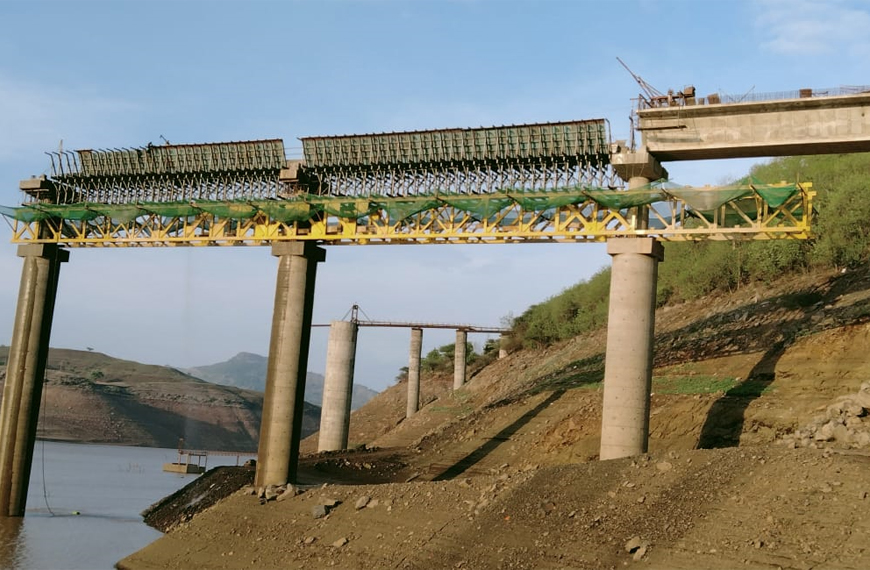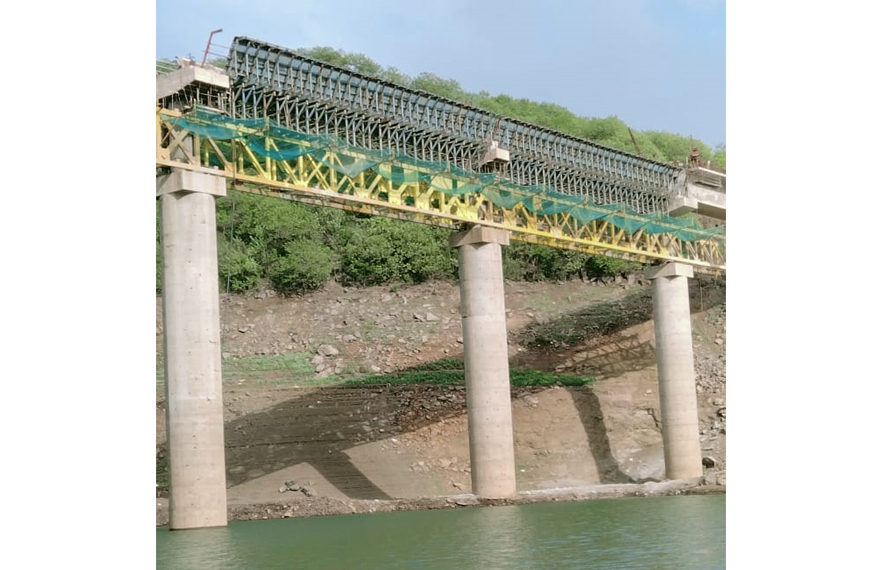FAQ
- Description: Uses timber or plywood supported by scaffolding or steel props.
- Applications: Small-scale or less complex bridge components like abutments, piers, or short-span decks.
- Advantages: Low cost, flexible, suitable for small projects.
- Disadvantages: Labor-intensive, time-consuming, not suitable for large or repetitive structures.
b) Modular/Formwork System (Steel/Aluminium Systems)
- Description: Prefabricated panels made of steel or aluminium.
- Applications: Pier caps, decks, and abutments.
- Advantages: Reusable, faster assembly, high-quality finish.
- Disadvantages: Higher initial cost, mechanical handling.
c) Cantilever Formwork (Balanced Cantilever Method)
- Description: Used when bridge segments are cast in-situ in a balanced manner from a pier.
- Applications: Long-span bridges over water or deep valleys.
- Advantages: No need for ground-based falsework, suitable for inaccessible locations.
- Disadvantages: Complex engineering.
d) Incremental Launching Formwork
- Description: Bridge superstructure is cast in segments in a stationary formwork and pushed/“launched” longitudinally over piers.
- Applications: Straight or slightly curved bridges.
- Advantages: Suitable for difficult terrain, limited site disruption.
- Disadvantages: Requires careful alignment, high precision needed.
e) Form Traveller System
- Description: Equipment used to support formwork for casting bridge segments in a balanced cantilever construction.
- Applications: Cable-stayed and cantilever bridges.
- Advantages: Reusable, adjustable, efficient for long spans.
- Disadvantages: complex to operate.
f) Climbing Formwork
- Description: Mechanized system that climbs upward as construction progresses.
- Applications: Bridge towers or pylons (e.g., cable-stayed or suspension bridges).
- Advantages: Safe and efficient for tall vertical structures.
- Disadvantages: Limited to vertical elements.
g) Tunnel Formwork (used in box girder bridges)
- Description: Steel formwork that forms the deck and walls in one operation.
- Applications: Box girder bridges.
- Advantages: Fast construction, smooth finishes, repetitive use.
- Disadvantages: Less flexibility for non-standard designs.
Box girder formwork offers several advantages in bridge construction, particularly for long-span and high-load bridges. Here are the key benefits:
a) High Strength and Load-Bearing Capacity- Box girders have a closed-cell structure, providing excellent resistance to torsion and bending.
- Ideal for curved or skewed bridges where torsional forces are significant.
b) Efficient Use of Materials
- Optimized design allows for less material usage compared to solid sections for the same strength.
- Lightweight for the given structural capacity, helping in cost-effective construction.
c) Aesthetic and Slim Profile
- Box girders can be designed with a clean and smooth underside, offering an aesthetically pleasing appearance.
- Slim profiles are ideal for urban or architectural settings .
d) Better Durability and Protection
- The enclosed shape protects internal components like post-tensioning tendons from weather and corrosion
- Suitable for harsh environments, such as coastal areas
e) Versatile Construction Methods
- Compatible with segmental construction, cast-in-place, or precast techniques.
- Adaptable to incremental launching, balanced cantilever, and span-by-span methods, making it versatile for varied site conditions.
f) Safety and Stability During Construction
- The closed box section offers greater stability during erection, reducing the risk of deformation or collapse.
- Formwork systems can be pre-assembled and reused, improving construction speed and worker safety.
g) Economical for Repetitive Structures
- Particularly cost-effective for repetitive spans, as formwork can be reused multiple times
- Reduces labor and formwork costs on longer projects
Bridge shuttering refers to the temporary framework or formwork used to support the concrete during the construction of a bridge until it gains sufficient strength to support itself.
- • Shuttering is a type of formwork specifically designed to mold and support cast-in-place (in-situ) concrete until it hardens and gains enough strength.
- • In bridge construction, shuttering is used to shape and support elements like:
- • Bridge decks
- • Beams/girders
- • Piers
- • Abutments
Improper bridge formwork installation can lead to serious safety hazards, structural deficiencies, and financial consequences. Here are the main risks:
a) Structural Failure- Collapse of the formwork during concrete placement due to insufficient strength or stability can result in the entire bridge or a section failing.
- Premature removal or poor support can cause the fresh concrete to crack, deform, or collapse under its own weight.
b) Worker Safety Hazards
- Improperly installed formwork can collapse unexpectedly, endangering workers with falls, crushing injuries, or fatalities
- Loose or unstable platforms also increase the risk of accidents during construction.
c) Poor Structural Integrity
- Misalignment or movement of formwork can result in:
- Uneven or misaligned bridge elements
- Honeycombing or voids in the concrete
- Weak points that may compromise the bridge's long-term performance or safety
d) Delays and Cost Overruns
- A collapse or failure can halt construction, requiring costly rework, material replacement, and investigations.
- Repairing or replacing damaged sections increases both time and financial costs
- Improper installation may not meet engineering specifications or building codes, leading to legal liability, fines, or the need for redesign.
f) Environmental Risks
- If a collapse occurs over a water body or environmentally sensitive area, it can lead to pollution, legal violations, or ecological damage.
Summary Table:
| Risk Category | Examples |
| Structural Failure | Collapse, deformation, cracks |
| Safety Hazards | Worker injuries, fatalities |
| Integrity Issues | Misalignment, weak concrete, honeycombing |
| Cost & Time | Rework, delays, legal disputes |
| Compliance | Violation of codes or engineering standards |
| Environmental Impact | Debris in rivers, soil contamination |
Ensuring proper design, material selection, skilled labor, and regular inspections is critical to avoiding these risks


